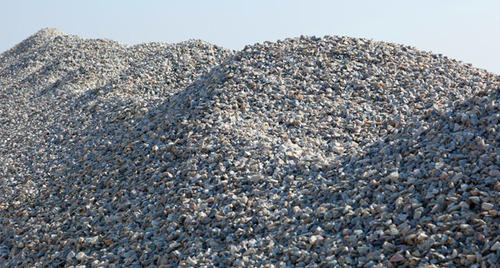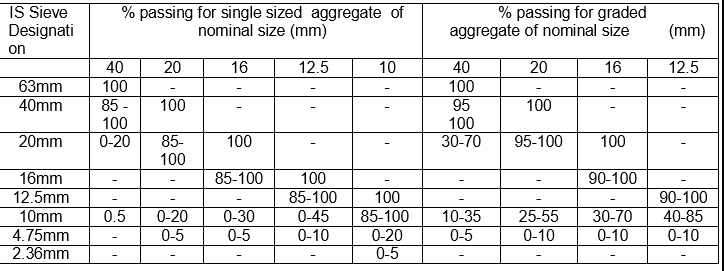What is the meaning of aggregate|what is coarse aggregate
In this article we will let you know What is the meaning of aggregate| what is coarse aggregate and their basic things which should be known by the Civil Engineer.
What is the meaning of aggregate?
Aggregate in general consists of both fine and coarse inert materials used in the manufacture of concrete. Fine aggregate is aggregate all of which passes through 4.75 mm IS sieve. Coarse aggregate is aggregate most of which is retained on 4.75 mm sieve
As I am too Civil Engineer so one tip for all my new Civil Engineer Readers that, All fine and coarse aggregates proposed for use in the work shall be subject to Engineer’s approval and after specific materials have been accepted, the source of supply of such materials should not be changed without prior approval of Engineer.
What does aggregate mean?
Aggregates consist of natural sands, crushed stone and gravel from a source known to produce satisfactory aggregate for concrete and shall be chemically inert, strong, hard, durable against weathering, of limited porosity and free from deleterious materials that may cause corrosion of the reinforcement or may impair the strength and/or durability of concrete. Most important point to be noticed is the grading of aggregates shall be such as to produce dense concrete of specified strength and consistency that will work readily into position without segregation and shall be based on the mix design and preliminary tests on concrete.
Sampling and testing of aggregate
Samples of the aggregates for mix design and determination of suitability shall be taken under the supervision of Engineer and delivered to the laboratory, well in advance of the scheduled placing of concrete. Records of tests, which have been made on proposed aggregates and on concrete made from this source of aggregates, shall be furnished to Engineer in advance of the work for use in determining aggregate suitability.
What is the process of Storage of Aggregates?
All coarse and fine aggregates shall be stacked in stock separately in stock piles in the material yard near the work site in bins properly constructed to avoid inter mixing of different aggregates. Contamination with foreign materials and with earth during storage and while heaping the materials shall be avoided. The aggregate must be of specified quality not only at the time of receiving at site but more so at the time of loading into mixer. Rackers shall be used for lifting the coarse aggregates from bins or stockpiles. Coarse aggregate shall be piled in layers not exceeding 1.20 meters in height to prevent coning or segregation. Each layer shall cover the entire area of the stockpile before succeeding layers are started. Aggregates that have become segregated shall be rejected.
Specific Gravity of aggregate
Aggregate except as noted above and for other than lightweight concrete shall consist of natural or crushed sand shall conform to IS 383. The sand shall be clean sharp, hard, strong and durable and shall be free from dust, vegetable substances, adherent coating, clay, alkali, organic matter, mica, salt or other deleterious substances, which can be injurious to the setting qualities/strength/ durability of concrete.
What is coarse aggregate?
Coarse aggregate for concrete, except as noted above and for other than lightweight concrete shall conform to IS 383. This shall consist of natural or crushed stone and gravel and shall be clean and free from elongated, flaky or laminated pieces adhering coatings, clay lumps, coal residue, clinkers slag, alkali, mica, organic matter or other deleterious matter.

Screening and Washing of coarse aggregate
Natural gravel and crushed rock shall be screened and/or washed for the removal of dirt or dust coating.
What is Grading of coarse aggregate?
Coarse aggregate shall be graded in both cases the grading shall be within the following limits.

1. The pieces shall be angular in shape and shall have granular or crystalline surfaces, Friable, flaky and laminated pieces, mica and shale, if present, shall be only in such quantities that will not, is the opinion of Engineer affect adversely the strength and/or durability of concrete.
2. The maximum size of coarse aggregate shall be 75 mm for class concrete 40-mm for class B concrete and 20mm for class C concrete. The maximum size of coarse aggregate shall be the maximum size specified above, but in no case greater than 1/4 of the minimum thickness of the member, provided that the concrete can be placed without difficulty so as to surround all reinforcement thoroughly and fill the corners of the form. Plums above 150 mm and up to any reasonable size can be used in plain very concrete work of large dimensions up to a maximum limit of 20% of volume of concrete when specifically approved by Engineer.
3. For heavily reinforced concrete members the nominal maximum size of the aggregate shall be 5 mm less than the minimum clear distance between the reinforcing main bars or 5mm less than the minimum cover to the reinforcement whichever is smaller.
4. The amount of fine particles occurring in the free state or as loose adherent shall not exceed 1% when determined by laboratory sedimentation tests as per IS 2386. After 24 hours immersion in water, a previously dried sample shall not have gained more than 10% of its oven dry weight in air, as determined by IS 2386.
What are the characteristics of good building stone
Foreign Materials Limitations in coarse aggregate
The percentages of deleterious substance in the coarse aggregate delivered to the mixer shall not exceed the following:

If you have any query about the article What is the meaning of aggregate|what is coarse aggregate then come up with the comments or like our facebook page and their you contact me with all your concerns and problems related to this article or anything which you want i to write for the civil engineering you can recommend me there. If you want me to add anything more in this article What is the meaning of aggregate|what is coarse aggregate just write us that too. we will review it and if data is ok then we will update that too in the content.
Leave a Reply